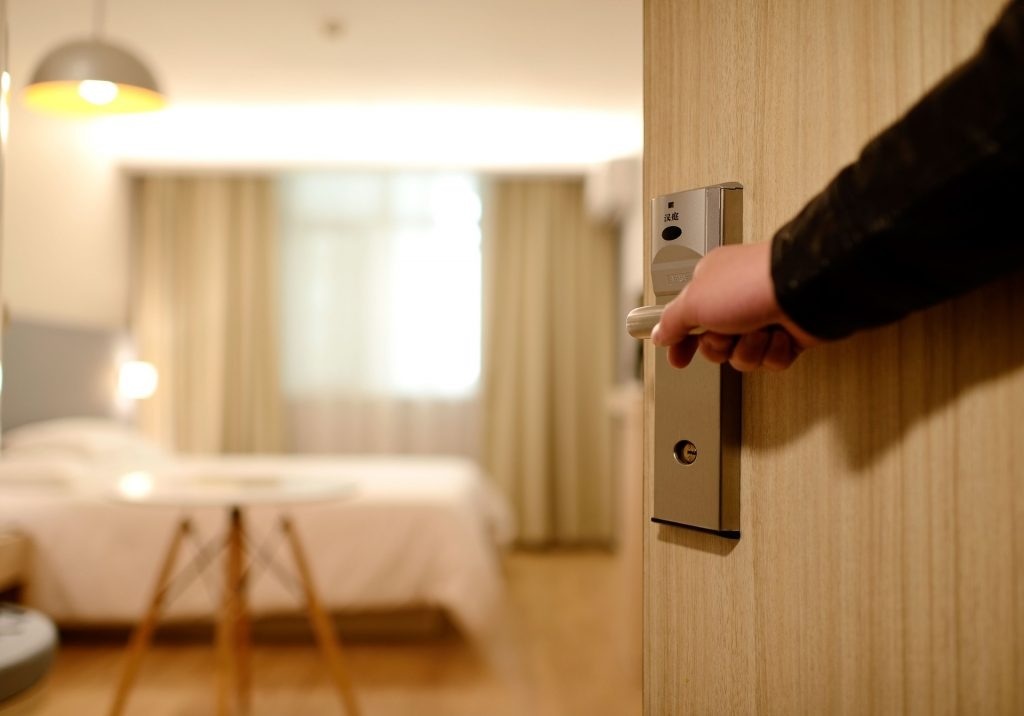Keeping your home peaceful is no small feat, especially with thin interior doors that let noise pass through easily. Soundproofing your interior doors can make a significant difference in reducing noise pollution, enhancing privacy, and even increasing home value. This guide will walk you through affordable and effective DIY methods for soundproofing interior doors, ensuring your space stays quiet and serene.
Before diving into the methods, it’s essential to understand why doors are a weak spot for noise. Most interior doors are hollow-core, meaning they are lightweight and provide minimal sound insulation. That’s where strategic soundproofing comes in. And if you’re exploring Healthyhouseplans for more home improvement tips, you’ll find even more insights to enhance your living environment.
Why Soundproofing Interior Doors Matters
Whether you’re dealing with noisy neighbors, loud housemates, or just trying to create a quiet home office, soundproofing is crucial. According to the World Health Organization, exposure to excessive noise can impact sleep, productivity, and overall well-being. By soundproofing your doors, you can significantly reduce unwanted sounds, improve concentration, and create a more relaxing atmosphere.
Key Principles of Soundproofing
To effectively soundproof a door, it’s important to target the following aspects:
- Mass: Adding materials to increase the door’s weight helps block sound.
- Damping: Reduces vibrations caused by sound waves.
- Sealing gaps: Eliminates spaces where sound can pass through.
With these principles in mind, let’s explore practical DIY solutions.
Use a Door Sweep for Soundproofing
Installing a door sweep is a cost-effective way to block noise coming from under the door. These simple tools attach to the bottom edge of the door and create a seal against the floor.
- Why it works: Door sweeps are excellent at blocking sound and drafts.
- Installation Tip: Measure your door width and choose a sweep made of heavy-duty rubber for maximum sound dampening.
Pro Tip: Pairing a door sweep with a dense rug or carpet further reduces noise transfer.
Read More Also: What Color Does Blue and Green Make? Exploring the Fascinating Blend
Install Weatherstripping Around the Door Frame
Weatherstripping is typically used for insulation, but it works wonders for soundproofing too. Foam or rubber weatherstrips create a snug seal around the door edges, blocking sound leaks.
- Why it works: It addresses the gaps that let sound pass through.
- Budget-Friendly: High-quality weatherstripping materials can cost as little as $15.
Insider Note: Properly apply weatherstripping to avoid uneven gaps. For a detailed guide on sealing exterior doors, click on https://healthyhouseplans.com/home-improvement/sealing-your-exterior-door-frame-a-step-by-step-guide-for-enhanced-protection-and-efficiency/.
Add a Soundproofing Blanket
Soundproofing blankets are portable, versatile, and effective for doors that cannot be permanently altered. These dense blankets are made from materials designed to absorb sound waves.
- Why it works: They add mass and reduce sound vibrations.
- Easy to Use: Hang them over the door using hooks or adhesive strips.
Real-Life Insight: A quality soundproofing blanket can reduce noise by up to 80%, according to Soundproof Living.
Apply Acoustic Panels to the Door
Acoustic panels are widely used in recording studios and are a practical DIY solution for home soundproofing.
- Why it works: These panels absorb sound waves rather than blocking them, making them ideal for high-noise areas.
- Installation Tip: Use adhesive strips for a non-permanent solution.
Seal the Door Frame with Acoustic Caulk
Soundproofing efforts can fail if gaps around the door frame are left untreated. Acoustic caulk, a flexible sealant, is designed to block sound transmission.
- Why it works: It remains flexible over time, effectively sealing gaps as the door frame expands and contracts.
- Pro Tip: Use high-quality acoustic caulk around door frame edges for optimal results.
Did You Know? Studies show that sealing gaps can improve soundproofing by up to 50%.
Replace Hollow-Core Doors
If your budget allows, replacing your hollow-core door with a solid-core alternative is one of the most effective ways to block sound.
- Why it works: Solid-core doors are denser and more effective at blocking sound waves.
- Cost Insight: Expect to pay around $150–$400 for a solid-core door, depending on the material and style.
Use Mass-Loaded Vinyl (MLV)
Mass-loaded vinyl is a high-density material used to soundproof walls, ceilings, and doors.
- Why it works: MLV adds significant mass to the door, effectively blocking sound.
- Installation Tip: Attach MLV directly to the door surface using nails or adhesive.
Layer Curtains or Drapes
Heavy curtains or drapes can provide a quick and aesthetic soundproofing solution for doors with glass panels.
- Why it works: They add mass and absorb sound waves.
- Stylish Options: Choose thick, thermally insulated curtains for added benefits like temperature control.
FAQs
How effective are DIY methods for soundproofing doors?
DIY methods can reduce noise significantly, often by up to 70%, depending on the techniques and materials used.
Can I soundproof a door without replacing it?
Yes, techniques like adding door sweeps, weatherstripping, and acoustic caulk around door frames are highly effective without needing a new door.
What is the best material for soundproofing doors?
Mass-loaded vinyl, acoustic panels, and solid-core doors are among the best materials for soundproofing.
Are there affordable soundproofing options?
Absolutely. Weatherstripping, door sweeps, and soundproofing blankets are budget-friendly and effective.
How long does it take to soundproof a door?
Most DIY methods can be completed in 1–2 hours with basic tools.
Can soundproofing improve energy efficiency?
Yes, sealing gaps and adding insulation can enhance energy efficiency by reducing air leaks.
Conclusion
Soundproofing your interior doors doesn’t have to be an expensive or time-consuming project. By using a combination of methods like applying weatherstripping, installing a door sweep, and adding mass with acoustic panels, you can create a quieter, more comfortable space.





